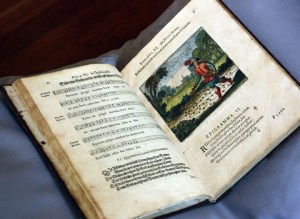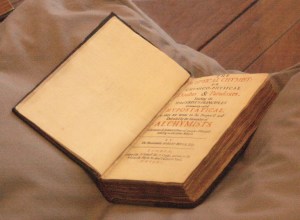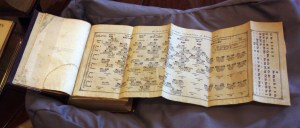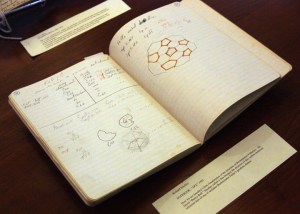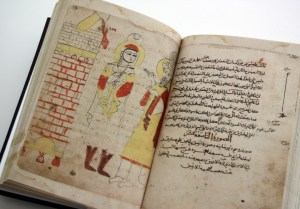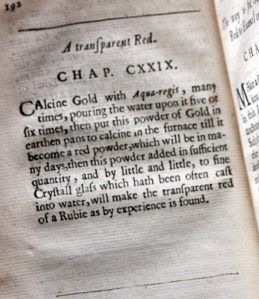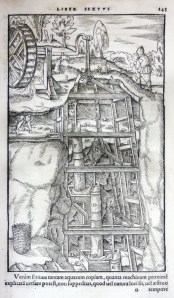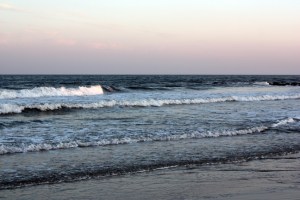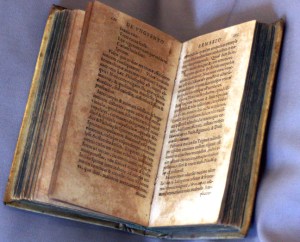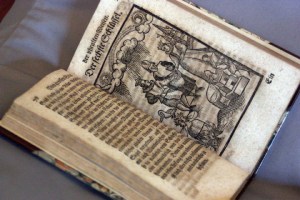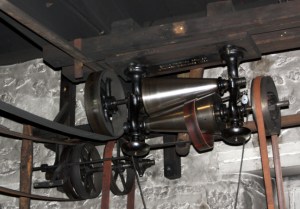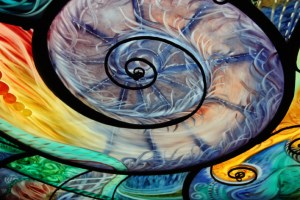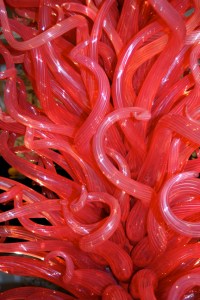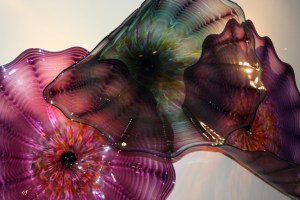One of the points I hope to make as I build podcast episodes for The Elements Unearthed project is to show the threads that lead to modern chemistry as an empirical science. I have seen from my research here at Chemical Heritage Foundation that there are at least three major threads that all came together in the 17th and 18th Centuries to define what we call Chemistry today.
The first thread was that of Theory or Logical Speculation – beginning with the Greek philosophers (such as Democritus and Aristotle) and continuing with attempts through the Middle Ages and Early Modern periods to reconcile atomic theory with church dogma (such as the attempts of Pierre Gassendi) or to refine and build on elemental (Aristotelian) theory, such as the Summa Theologica of St. Thomas Aquinas. This thread wasn’t concerned with experimental proof – that would only come later – but instead valued logical consistency and careful reasoning. The culmination of this thread was the revised (modern) atomic and corpuscular theories of Daniel Sennert, Robert Boyle, and John Dalton.
The second thread was that of Alchemy, which I have been pursuing these past three weeks by locating related books in the CHF archives and photographing interesting pages. The alchemists had several goals in mind – the transmutation of base metals into gold, the creation of immortality (or at lest the cure of diseases) through the Elixir of Life or Philosopher’s Stone, and the purification of the inner self (spriritual alchemy). Despite their tendency to become secretive and overly allegorical, their constant experiments toward these goals laid a basic foundation for modern chemistry through all the compounds and materials they created which were failures. Sometimes the symbolism can be a lot of fun, such as this page from Michael Maier’s Atalanta Fugiens (Atlanta Fleeing). In a series of emblems representing different alchemical processes, Maier created a publishing masterpiece that includes symbolic drawings (the first eleven are even hand colored), epigrams (riddles), songs, and other brain teasers. Perhaps even his title is a pun; maybe Fugiens is a play on the word fugue (again my lack of Latin training could be steering me wrong). If so, it would place his work in the company of Bach and Escher. I photographed all the emblems and all the music, and I hope to try out the songs and see if they have any fugue-ish qualities. If so, it would be fun to record them and use them for background music for the podcast episodes.
The final thread, which is perhaps under appreciated, is that of the craftsman. These were the metalworkers, glass makers, stonecutters, painters, masons, engravers, sculptures, dyers, miners, printers, book binders, potters, jewelers, and other people who made practical materials and works of art. They developed high levels of technical skill during the Middle Ages (one of the reasons we don’t call them the Dark Ages anymore). Their skills were rarely written down, and even then usually as a set of lab notes of basic recipes without much explanation. Some of these lab notes have come down to us, recopied and much garbled, such as the Leydon Papyrus X, the writings of Pseudo-Democritus (Bolos of Mendes), the Natural History of Pliny, the Mappae Clavicula, and a very few others. I have been looking over a modern translation of the Treatise of Theophilus, who has been identified as one Roger of Helmarshausen, a talented metalworker who lived around 1100. Some of his works, such a portable alters and elaborate book covers, still exist in museums. His book is much more than the standard lab recipes; he gives detailed instructions and his chapter on metalwork is especially vivid and shows the first-person perspective of someone who did metalwork every day. His work was very influential in later technical books, such as the Pyrotechnia of Biringucci (1540) shown here or Antonio Neri’s Art of Glass or Agricola’s De Re Metallica. In this page, Biringucci shows how to hang bells that have been cast. Theophilus discussed how to cast and hang bells as well, showing this to be an ancient and highly technical skill.
This past week I have begun to tie these threads together into the beginnings of modern chemistry. Although Antoine Lavoisier is credited with finally turning chemistry into a quantitative science, it was Robert Boyle who first proposed that chemistry should be based on experimentation and observation rather than logic and speculation. If there was one moment when Aristotle was finally cast into the fire, it was 1661 when Boyle first published The Sceptical Chymist. You see here a photo of the title page of a first edition of that book, which is extremely rare (less than 35 copies remain). We held an open house at CHF this Wednesday for invited guests (mostly chemistry experts and historians) and the archivists brought this book out and I managed to get a few photos of it. In addition, they had the first full printed version of Mendeleyev’s periodic table, and the notebook of Richard Smalley from 1985 where he first drew the structure of buckminsterfullerine (the famous bucky ball) that won him a Noble Prize. All very cool stuff for us chemistry geeks.
Finally, more on the order of a teaser than for any other reason, here is another Earth animation. The texture this time is a NASA photographic montage of the Earth taken in May, 2007 (notice the recent snow in Europe) with ocean bathymetric data added. This is the most detailed Earth texture I have tried yet. I haven’t created any new animations this week because I’ve been having so much fun with the rare books, but the progress toward final editing of the student episodes is continuing; my plan remains to have serveral episodes ready to upload by August 31, with more shortly thereafter. I’ll have more teasers in the weeks to come. August will be a productive month for this project as I am planning to duplicate some of the CHF photo collection; interview several experts on matter theories, the history of chemistry, and the periodic table; and to visit several mine sites including a zinc mine in New Jersey, a coal mine in Scranton, and the mineral exhibit at the Natural History Museum in Washington, D.C. All of this will be shown in future posts. Until then . . . . TTFN.

